Opinion
MWL should separate the wheat from the chaff
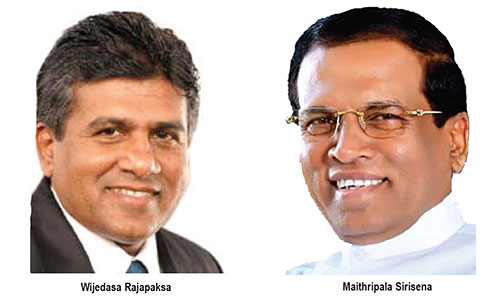
By Rohana R. Wasala
Government MP Dr. Wijedasa Rajapaksa, a former Justice Minister and an ex-president of the Bar Association of Sri Lanka, stated over a month ago that the Muslim World League “(owes) families of those who had perished or suffered injuries in the Easter Sunday terror attacks USD 5 mn.” (‘Wijedasa takes it up with Saudi-based outfit’ by Shamindra Ferdinando, The Island, March 25, 2021). This is money that the MWL General Secretary Dr. Sheikh Muhammad Abdul Kareem Al-Issa was said to have promised on behalf of his organization towards the relief of the surviving victims of those attacks at a so-called National Peace Conference held at Nelum Pokuna under the patronage of the then President Maithripala Sirisena on June 30, 2019, a little over two months after the Easter Sunday attacks carried out by eight Islamist suicide bombers in the name of their religion. As claimed by MP Rajapaksa, the Sheikh made the promise in the presence of the then incumbent Sirisena, and former presidents Chandrika Bandaranaike and Mahinda Rajapaksa, among other dignitaries. The same three past presidents dutifully attended the second National Peace Conference on March 5, this year. MP Rajapaksa told The Island that he brought up the issue with the MWL head. This was through a letter of his dated March 22, 2021, where he urged the latter to fulfill what he had promised without further delay. MP Rajapaksa stressed: “Let us hope those who organised the Nelum Pokuna event, too, will take up this matter with the Muslim World League and finalise the transfer of funds before the second anniversary of 2019 Easter Sunday carnage.”
The failure of the MWL was mentioned even at the PCoI, according to the MP, who further said that he had raised the matter with the offices of the previous and present presidents. Dr P.B. Jayasundara (Secretary to the current incumbent) had confirmed that the funds in question had not been received. A letter that the then Western Province Governor A. J. M. Muzammil had received from Muhammad Al-Issa, to which MP Rajapaksa refers, seems to have a hint about the possible reason for the unexplained delay in the payment of the promised financial assistance: it is probably being withheld “pending Sri Lanka providing information relating to the spate of suicide attacks”. Whether the MP’s importunity in the given context is shared by the government is in doubt. What should be of greater concern for the government is the fact that, by contriving to get themselves identified as constituting the whole Muslim community of the country, the handful of Islamist extremists who are widely believed to have provided tacit or explicit support for the suicide bombers are also foisting themselves on its (the MWL’s) powerful patronage. While being grateful to this organization for offering welcome help at a moment of national distress, Sri Lankan leaders must take care not to allow these Islamist extremists tainted with suspected association with the terrorists who caused that suffering to jeopardise its relations with the traditionally friendly Muslim nations through subterfuge. At the same time, it behoves our leaders to establish the genuineness of the MWL’s intentions and to have a correct understanding of the rationale of its involvement in the post-attack context, before accepting its charity.(Aside: Islamic Jihadists and fanatical Christian proselytizers are minorities that should not for a moment be identified with the traditional Sri Lankan Muslim and Christian communities who have always lived in harmony with the Sinhala Buddhists and Tamil Hindus for centuries. Sri Lanka must take special care to prevent the problematic Islamist and Christian extremist sects from pretending to the outside world that they respectively represent the country’s Muslim and Christian mainstreams in order to subvert its foreign relations as certain powerful Muslim politicos who have somehow contrived to ingratiate themselves with the powers that be seem to be doing at the moment.)
According to the Wikipedia, the Muslim World League is a (Saudi) government-funded NGO, which was founded in Mecca, Saudi Arabia in 1962. The name suggests that it is about the pan-Islamic Muslim world, not the world in general, which Muslims share with people of other non-Muslim faiths. It came into existence for the purpose of serving Islam and Muslims. Its founding charter, according to the information currently given in the Wikipedia, is as follows:
“We the members of the Muslim World League, representing it religiously, hereby undertake before God, Almighty to: Discharge our obligation towards God, by conveying and proclaiming His Message all over the world. We also reaffirm our belief that there shall be no peace in the world without the application of the principles of Islam. Invite all communities to vie with one another for the common good and happiness of mankind, establish social justice and a better human society. Call upon God to bear witness that we do not intend to undermine, dominate or practice hegemony over anyone else. Hence, in order to further these goals, we intend to: Unite the ranks of the Muslims, and remove all divisive forces from the midst of the Muslim communities around the world. Remove obstacles in the way of establishing the Muslim world union. Support all advocates of charitable deeds. Utilize our spiritual as well as material and moral potentialities in furthering the aims of this charter. Unify efforts in order to achieve these purposes in a positive and practical way. Reject all the pretenses of ancient as well as contemporary Jahiliyah (attitudes of the pre-Islamic era). Always reaffirm the fact that Islam has no place for either regionalism or racism.”
The organization has thus an extensive global agenda with inevitable, wide ranging, religious, educational, cultural, legal, and political implications, particularly for non-Muslim countries Sri Lanka, given that the organization is committed to foster the fiercely conservative brand of Islam, Wahhabism (or Salafism), which is Saudi Arabia’s state religion. It will, among other things, include laying down plans designed to revive the role of the Mosque in the fields of guidance, education, preaching and provision of social services, conducting a comprehensive survey of the world’s Mosques and publishing the information gathered in book form and in the shape of periodical bulletins, selecting and posting groups of well qualified preachers on guidance missions throughout the Mosques of the world, formation of board of directors to supervise the affairs of each and every Mosque at the national as well as the regional levels, studying the ideas and patterns of behavior that contravene the teachings of Islam, and helping in rehabilitating and training Imams and khateebs for posting to the various Muslim areas to lead Muslims in prayers, deliver sermons and guidance lessons (a khateeb is a person who delivers a sermon during Friday prayers).
As the Wikipedia further informs us, all Saudi Arabian citizens are legally required to be Muslims. They don’t have the right to freedom of religion (as the term is understood in democratic countries); nor do the expatriate workers employed in the Saudi kingdom. The official and dominant form of Islam practiced in Saudi Arabia is Wahhabism (also called Salafism) which emerged in the 18th century. Its adherents believe that its teachings “purify the practice of Islam of innovations or practices that deviate from the seventh century teachings of Muhammad and his companions”. Saudi Arabia has long been accused of being the principal exporter of Islamist extremism (WikiLeaks cables). “… Saudi Arabia arguably remains the most prolific sponsor of international Islamist terrorism, allegedly supporting groups as disparate as the Afghanistan Taliban, Al Qaeda, Lashkar-e-Taiba (LeT) and the Al-Nusra Front… Saudi Arabia is said to be the world’s largest source of funds and promoter of Salafist jihadism …. which forms the ideological basis of terrorist groups such as al-Qaeda, Taliban, Islamic State of Iraq and the Levant and others” (‘State-sponsored terrorism’/Wikipedia/Page last edited 14 April 2021). Saudi Arabia denies these allegations, but the Wikipedia entry mentions the prevalent argument that by its very nature Wahhabism/Salafism “encourages intolerance and promotes terrorism”.
The MWL, while propagating the religion of Islam, encourages Dawah (lit. issuing summons to/euphemistically, inviting or calling non-Muslims to join, i.e., preaching to them) and conversion of non-Muslims; funds construction of mosques and provides financial relief for Muslims affected by natural disasters; finances distribution of copies of the Quran and political tracts on Muslim minority groups. Though the organization claims that “they reject all acts of violence and promote dialogue with the people of other cultures, within their understanding of Sharia”, they are not free from controversy on that point, having been the subject of several ongoing counter terrorism investigations in the US related to Hamas, al Qaeda and other terrorist groups”
However, since 2016, the Muslim World League has been claiming to be dedicated to combating extremist ideology, and to confronting hatred, disunity and violence closely associated with extremism. The US State Department, in its 2019 Country Reports on Terrorism, stated that the Muslim World League’s Secretary General, Muhammad Abdul Kareem Al-Issa “pressed a message of interfaith dialogue, religious tolerance, and peaceful coexistence with global religious authorities, including Muslim imams outside the Arab world.” The same document said that he “conducted extensive outreach to prominent U.S. Jewish and Christian leaders”. No doubt, the MWL is on the same pious mission in Sri Lanka. We may be hopeful that the MWL leader will similarly reach out to the non-Muslim 90% of the Sri Lankan population comprising Christians, Hindus, and Buddhists.
But whether the assurances given to the powerful US will hold for a small non-Muslim country like ours is still a moot point. The MWL’s sponsor Saudi Arabia is an absolute monarchy without a legislature (Wikipedia), let alone an elected legislature; its state religion Sunni Islam or Wahhabism, is growing to be the majority Buddhist Sri Lanka’s scourge, unless checked in time with the help of the predominantly Sufi mainstream Muslim minority, who have peacefully coexisted with the majority Buddhist and other non-Muslim minorities for centuries. The MWL’s post-April 21, 2019 interest or involvement in Sri Lanka should be judged according to its uncompromising commitment to “serving Islam and Muslims” everywhere as explained in the foregoing account. The rich and powerful Saudi-funded, Saudi-basedl Wahhabism-inspired NGO outfit’s patronage of Sri Lanka’s approximately 10% Muslim minority is bound to have understandably important repercussions.
One could argue that the so-called National Conference on Peace, Harmony and Coexistence that introduced the MWL to the country just two months after the April 21 Islamist terror bombings, in effect, both ‘nationalised’ and ‘internationalised’ Sri lanka’s still nascent Islamic fundamentalist problem. Unless sorted out early, this is not going to do any good to the peaceful and harmonious coexistence which all Sri Lankans of different ethnicities and cultures have been enjoying to date mainly thanks to the influence of the country’s extremely accommodating, tolerant Buddhist cultural foundation, something that is today universally accepted and appreciated by all peaceful non-Buddhist minorities. Through its friendly outreach to the non-Muslim majority, the MWL can hope to further strengthen the already existing interfaith harmony and peaceful coexistence in our island nation. It is heartening that the Saudis now reject extremist ideology and terrorism. However, unfortunately, this cannot be asserted without reservations.
According to The Island news report mentioned above, Secretary to former president Sirisena, Samira de Silva, told the paper that the MWL was delaying the payment because the National Peace Conference event organizers had still not responded to the following questions: “(1) the number of dead and wounded (2) their faith (religion) (3) list of the dead and the wounded (4) collateral damage to public property (5) number of widows and orphans (6) other relevant information and (7) account number of the President’s or Prime Minister’s charitable fund”.
To my mind, these are not charitable questions that we would expect a genuinely humanitarian organization to ask. Why should they demand specific information about the victims’ religion and their particular identities? The term ‘collateral damage’ refers to unintended, but unavoidable, accidentally caused, damage to civilians’ lives and their property during a military conflict. The NGO also calls for the account number of the President’s or Prime Minister’s charitable fund.
Why all this cheeseparing for the insultingly derisory sum of 5 mn US Dollars by a rich Saudi government funded NGO? For Saudi Arabia with its relatively small population of 34.2 million (2019 estimate) and its GDP at 1.9 trillion US Dollars and per capita income at 56,817 US Dollars (Wikipedia), it is peanuts. Of course, the 5 mn dollar sum (roughly the equivalent of 1 billion currently debased SL rupees) is not intended to sound like a big amount to Sri Lankans, for that would be an affront to their general knowledge.
The Island report said: “According to a missive received from Dr. Jayasundera, the Muslim World League was to directly get in touch with the Prime Minister’s Office to finalise the matter”. Dr Jayasundera is Secretary to President Gotabaya Rajapaksa, who seems to have transferred the ‘matter’ to the PM.
Opinion
When crisis comes to classroom:

How Sri Lankan children face natural disasters and economic problems
Sri Lanka has always found ways to survive storms. But during the past ten years, the storms have come more often and with more force. Floods have swallowed villages, landslides have buried homes, droughts have dried wells, and cyclones have pushed families out of their coastal towns. Then came the economic crisis in 2022 and 2023, which felt like an invisible disaster happening quietly inside every home. In the middle of all this were our schoolchildren. Their names rarely appeared in newspapers. Many of their stories were never told. A new study brings these voices together and shows how overlapping crises have reshaped education across the island. It also reveals something important: not all children suffered the same way.
This article tells that story through the experiences of teachers, parents and children. It also explains why some regions, some ethnic communities and some families struggled much more than others.
A decade of disruption
Over the past decade, Sri Lanka’s school system has been hit again and again. Floods in Ratnapura, Kalutara and Galle have become almost yearly events. Landslides in Badulla and Nuwara Eliya have cut off whole communities. Cyclones in Batticaloa and Ampara have damaged classrooms and left children in fear. Long droughts in the North and East have forced families to live with empty wells.
Then the economic crisis arrived. It brought fuel shortages, food shortages, transport problems, high prices and a heavy sense of uncertainty. Teachers stood in long queues just to buy a few litres of petrol. Parents struggled to buy exercise books. School buses stopped running. Many children stayed home. A school principal from the hill country said he could not remember a single year without crisis. “One month we have floods. The next month we have landslides,” he said. “The children keep losing learning time.” These experiences echo earlier concerns raised by Angela Little (2003) and Harsha Aturupane (2014), who showed that rural, estate and conflict-affected areas have always faced extra barriers. The new study suggests that recent disasters have made those old inequalities even wider.
When geography decides a child’s future
Sri Lanka is small, but the risks children face depend heavily on where they live. In the flood-prone river areas, schools often close for long periods. Many become temporary shelters filled with families, mats, cooking pots and clothing. Teachers say it can take weeks to clean and reopen classrooms. In the estate sector, children live high in the hills. When a landslide blocks a single narrow road, school simply stops. A teacher in Badulla said she once walked six kilometres during landslide season just to reach her students. “Some days I held on to tree roots to climb,” she said with a tired smile.
In cyclone-prone districts like Batticaloa and Ampara, fear becomes part of childhood. When the wind changes, parents start to worry. School roofs fly off. Books get soaked. Homes crumble. Recovery takes time, and many families cannot afford repairs.
In the drought-hit North and East, children sometimes miss school because they must help their mothers collect water. Teachers say these children return dusty, tired and unable to focus. Lalith Perera (2015) showed how geospatial tools can identify the highest-risk schools. The new study supports his findings and shows that children in these areas lose far more learning days than children in urban schools.
Ethnicity adds another layer to the struggle
Sri Lanka’s ethnic geography shapes children’s lives in deep ways. Tamil families in the North and East still face the long shadow of war-related poverty and lack of resources, as described by Shanmugaratnam (2015) and Samarasinghe (2020). Many schools in these areas are old, understaffed and in poor condition. When a cyclone or drought hits, recovery becomes slow and difficult. A teacher in Mullaitivu said her classroom lost its roof during a storm. “The children sat under a tree for weeks,” she recalled. “They still came. They did not want to fall behind.”
Muslim communities along the Eastern coast face frequent displacement during cyclonic seasons. When fishing families lose their boats and nets, income disappears. Children often miss school because parents cannot afford uniforms or bus fares.
Estate Tamil communities, studied earlier by Little and Jayaweera, continue to face long-term marginalisation. Many children rely heavily on school meal programmes. When the economic crisis disrupted these meals, teachers saw hunger more clearly than ever. Some children fainted in class.
In all these communities, ethnicity and geography combine to create layers of disadvantage that are hard to escape.
The economic crisis: A silent blow to education
The economic crisis of 2022–2023 affected every Sri Lankan home, but its impact was especially hard on low-income families. Economists like Nisha Arunatilake (2022) and Ramani Gunatilaka (2022) have shown how inflation and job losses pushed households into deep stress. These pressures directly affected children’s education.
With no fuel, many teachers could not travel. They walked long distances or hitchhiked. In some schools, several classes were combined because only a few teachers could come. School supplies became expensive. Parents reused old books or bought cheap, low-quality paper. Uniforms were patched many times. Some children wore slippers because shoes were too costly. Food shortages made everything worse. With rising prices, families reduced meals. In the estate sector, teachers saw hunger growing. Attendance fell.
Gender roles also shifted. Girls in rural areas took on childcare and cooking while parents worked longer hours. Boys were pushed into temporary labour. A mother in Monaragala said her teenage son cut timber to support the family. “He comes home exhausted,” she said. “How can he study after that?” Earlier, Selvy Jayaweera (2014) warned that crises deepen gender inequalities. The new study shows that her warning has come true again.
Schools tried to cope, but not all were ready
During field visits, researchers met principals who showed remarkable leadership. Some created disaster committees, organised awareness programmes and kept strong communication with parents. These schools recovered fast. Communities helped clean classrooms. Teachers volunteered for extra lessons. But many schools struggled. Some had no emergency plans. Others had old buildings damaged from past disasters. Some principals lacked training in crisis response. A few schools did not even have complete first aid boxes.
The difference between prepared and unprepared schools became painfully clear. After a cyclone in Batticaloa, one school restarted within a week. A nearby school stayed closed for nearly a month because debris and broken furniture filled the classrooms. Resilience expert Rajib Shaw (2012) highlighted the importance of strong partnerships between schools and communities. This study confirms that his message still holds true.
Families found ways to cope, but children paid the price
Every Sri Lankan family has its own survival strategies. Some borrow money. Some rely on relatives abroad. Some work extra hours. Some move to other districts. But these strategies often disrupt children’s schooling. When a father leaves home for work in another district, children lose emotional support. When a mother works late at a tea estate, older daughters must care for younger siblings. When a family moves temporarily, children lose teachers, routines and friends. A father in Ratnapura said he felt torn. “I want my daughter to study,” he said. “But how can I think of school when the river rises every year and we lose everything?” Years ago, sociologist K. T. Silva (2010) wrote about how poverty and displacement interrupt education. The new study shows that these patterns continue today.
How crises make old inequalities worse
One strong message from the study is that disasters do not create inequality they deepen what already exists. Rural schools with fewer resources suffer greater damage. Estate children who already face hunger become even more vulnerable. Tamil and Muslim families in hazard-prone areas must deal with both environmental and historical burdens.
Climate disasters also come in cycles. One flood does not end the struggle. Children who lose one month of school every year slowly fall behind. Their confidence drops. Their chances of continuing to higher education shrink. Meanwhile, well-resourced urban schools recover quickly. They have strong buildings, better communication and supportive parents. Their losses are small and temporary. The gap between privileged and vulnerable children grows wider each year.
What Sri Lanka can do now
Sri Lanka stands at a turning point. Climate change will bring more storms and droughts. The economy is still fragile. Schools must be prepared.
Every school needs a clear emergency plan. Preparedness should be part of daily school life safer buildings, evacuation routes, first aid training, and strong communication networks. Vulnerable regions need extra support. Flood-prone river basins, cyclone-hit coasts, drought-affected northern districts and the estate sector require more funding and attention. School meals must be protected. For many children, this meal is the difference between hunger and hope.
Teachers need help with transport and crisis training. Families need social protection so children are not forced into labour or long absences. Most importantly, education policy must place fairness at the centre. As Aturupane (2014) explained, equality cannot be achieved by giving all schools the same amount. Some schools need more because their burdens are heavier.
Stories that should guide policy
The most powerful part of this research is not the statistics. It is the stories:
A boy in Ratnapura losing his schoolbag to the floods.A teacher in Badulla walking through mud for her students.A mother in Batticaloa cooking in a cyclone shelter.A girl in Mullaitivu studying under a tree after her classroom roof blew away.A Muslim family in Ampara sheltering in a mosque during every storm.A Tamil child in Kilinochchi missing school to fetch water during drought.
These are the voices policymakers must listen to.
A future that values every child
Sri Lanka’s future depends on the minds of its children. If classrooms become unstable places, the country’s future becomes uncertain. But there is hope. Many teachers showed deep dedication. Many parents worked tirelessly to keep their children in school. Many communities showed unity and strength. If the government builds on this resilience through better planning, fairer funding and stronger support for vulnerable regions children’s dreams can survive the storms ahead. What we choose today will decide whether the next generation inherits disaster or opportunity.
References
Aturupane, H. (2014). Equity and Access in Sri Lankan Education. World Bank.Arunatilake, N. (2022). Economic Vulnerability and Social Protection in Times of Crisis. Institute of Policy Studies.Fernando, P. (2018). Household Vulnerability and Educational Participation in Rural Sri Lanka. SAGE Publications.Gunatilaka, R. (2022). The Impact of Economic Shocks on Sri Lankan Households. International Labour Organization.Jayaweera, S. (2014). Gender Dimensions of Educational Inequality in Sri Lanka. Centre for Women’s Research.Little, A. W. (2003). Education, Conflict and Social Cohesion in Sri Lanka. UNESCO.Perera, L. (2015). Geospatial Approaches to Educational Planning in Disaster-Prone Regions. Asian Development Bank.Samarasinghe, V. (2020). Regional Inequalities and Social Exclusion in Sri Lanka. Routledge.Shanmugaratnam, N. (2015). Post-War Development and Marginalisation in Northern Sri Lanka. Nordic Asia Press.Shaw, R. (2012). Community-Based Disaster Risk Reduction and School Resilience. Earthscan.Silva, K. T. (2010). Poverty, Displacement, and Educational Access in Sri Lanka. Social Scientists’ Association.UNICEF Sri Lanka. (2018). School Safety and Disaster Preparedness in Sri Lanka.
Opinion
The policy of Sinhala Only and downgrading of English
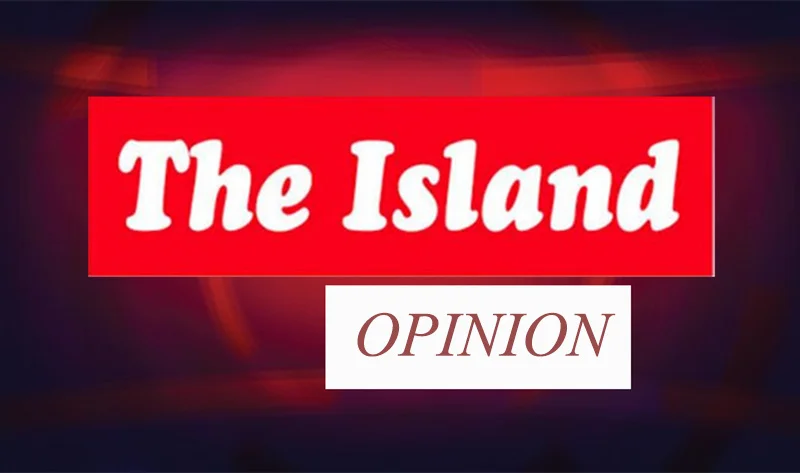
In 1956 a Sri Lankan politician riding a great surge of populism, made a move that, at a stroke, disabled a functioning civil society operating in the English language medium in Sri Lanka. He had thrown the baby out with the bathwater.
It was done to huge, ecstatic public joy and applause at the time but in truth, this action had serious ramifications for the country, the effects have, no doubt, been endlessly mulled over ever since.
However, there is one effect/ aspect that cannot be easily dismissed – the use of legal English of an exact technical quality used for dispensing Jurisprudence (certainty and rational thought). These court certified decisions engendered confidence in law, investment and business not only here but most importantly, among the international business community.
Well qualified, rational men, Judges, thought rationally and impartially through all the aspects of a case in Law brought before them. They were expert in the use of this specialised English, with all its meanings and technicalities – but now, a type of concise English hardly understandable to the casual layman who may casually look through some court proceedings of yesteryear.
They made clear and precise rulings on matters of Sri Lankan Law. These were guiding principles for administrative practice. This body of case law knowledge has been built up over the years before Independence. This was in fact, something extremely valuable for business and everyday life. It brought confidence and trust – essential for conducting business.
English had been developed into a precise tool for analysing and understanding a problem, a matter, or a transaction. Words can have specific meanings, they were not, merely, the play- thing of those producing “fake news”. English words as used at that time, had meaning – they carried weight and meaning – the weight of the law!
Now many progressive countries around the world are embracing English for good economic and cultural reasons, but in complete contrast little Sri Lanka has gone into reverse!
A minority of the Sinhalese population, (the educated ones!) could immediately see at the time the problems that could arise by this move to down-grade English including its high-quality legal determinations. Unfortunately, seemingly, with the downgrading of English came a downgrading of the quality of inter- personal transactions.
A second failure was the failure to improve the “have nots” of the villagers by education. Knowledge and information can be considered a universal right. Leonard Woolf’s book “A village in the Jungle” makes use of this difference in education to prove a point. It makes infinitely good politics to reduce this education gap by education policies that rectify this important disadvantage normal people of Sri Lanka have.
But the yearning of educators to upgrade the education system as a whole, still remains a distant goal. Advanced English spoken language is encouraged individually but not at a state level. It has become an orphaned child. It is the elites that can read the standard classics such as Treasure Island or Sherlock Holmes and enjoy them.
But, perhaps now, with the country in the doldrums, more people will come to reflect on these failures of foresight and policy implementation. Isn’t the doldrums all the proof you need?
by Priyantha Hettige
Opinion
GOODBYE, DEAR SIR

It is with deep gratitude and profound sorrow that we remember Mr. K. L. F. Wijedasa, remarkable athletics coach whose influence reached far beyond the track. He passed away on November 4, exactly six months after his 93rd birthday, having led an exemplary and disciplined life that enabled him to enjoy such a long and meaningful innings. To those he trained, he was not only a masterful coach but a mentor, a friend, a steady father figure, and an enduring source of inspiration. His wisdom, kindness, and unwavering belief in every young athlete shaped countless lives, leaving a legacy that will continue to echo in the hearts of all who were fortunate enough to be guided by him.
I was privileged to be one of the many athletes who trained under his watchful eye from the time Mr. Wijedasa began his close association with Royal College in 1974. He was largely responsible for the golden era of athletics at Royal College from 1973 to 1980. In all but one of those years, Royal swept the board at all the leading Track & Field Championships — from the Senior and Junior Tarbat Shields to the Daily News Trophy Relay Carnival. Not only did the school dominate competitions, but it also produced star-class athletes such as sprinter Royce Koelmeyer; sprint and long & triple jump champions Godfrey Fernando and Ravi Waidyalankara; high jumper and pole vaulter Cletus Dep; Olympic 400m runner Chrisantha Ferdinando; sprinters Roshan Fernando and the Indraratne twins, Asela and Athula; and record-breaking high jumper Dr. Dharshana Wijegunasinghe, to name just a few.
Royal had won the Senior & Junior Tarbats as well as the Relay Carnival in 1973 by a whisker and was looking for a top-class coach to mould an exceptionally talented group of athletes for 1974 and beyond. This was when Mr. Wijedasa entered the scene, beginning a lifelong relationship with the athletes of Royal College from 1974 to 1987. He received excellent support from the then Principal, late Mr. L. D. H. Pieris; Vice Principal, late Mr. E. C. Gunesekera; and Masters-in-Charge Mr. Dharmasena, Mr. M. D. R. Senanayake, and Mr. V. A. B. Samarakone, with whom he maintained a strong and respectful rapport throughout his tenure.
An old boy of several schools — beginning at Kandegoda Sinhala Mixed School in his hometown, moving on to Dharmasoka Vidyalaya, Ambalangoda, Moratu Vidyalaya, and finally Ananda College — he excelled in both sports and studies. He later graduated in Geography, from the University of Peradeniya. During his undergraduate days, he distinguished himself as a sprinter, establishing a new National Record in the 100 metres in 1955. Beyond academics and sports, Mr. Wijedasa also demonstrated remarkable talent in drama.
Though proudly an Anandian, he became equally a Royalist through his deep association with Royal’s athletics from the 1970s. So strong was this bond that he eventually admitted his only son, Duminda, to Royal College. The hallmark of Mr. Wijedasa was his tireless dedication and immense patience as a mentor. Endurance and power training were among his strengths —disciplines that stood many of us in good stead long after we left school.
More than champions on the track, it is the individuals we became in later life that bear true testimony to his loving guidance. Such was his simplicity and warmth that we could visit him and his beloved wife, Ransiri, without appointment. Even long after our school days, we remained in close touch. Those living overseas never failed to visit him whenever they returned to Sri Lanka. These visits were filled with fond reminiscences of our sporting days, discussions on world affairs, and joyful moments of singing old Sinhala songs that he treasured.
It was only fitting, therefore, that on his last birthday on May 4 this year, the Old Royalists’ Athletic Club (ORAC) honoured him with a biography highlighting his immense contribution to athletics at Royal. I was deeply privileged to co-author this book together with Asoka Rodrigo, another old boy of the school.
Royal, however, was not the first school he coached. After joining the tutorial staff of his alma mater following graduation, he naturally coached Ananda College before moving on to Holy Family Convent, Bambalapitiya — where he first met the “love of his life,” Ransiri, a gifted and versatile sportswoman. She was not only a national champion in athletics but also a top netballer and basketball player in the 1960s. After his long and illustrious stint at Royal College, he went on to coach at schools such as Visakha Vidyalaya and Belvoir International.
The school arena was not his only forte. Mr. Wijedasa also produced several top national athletes, including D. K. Podimahattaya, Vijitha Wijesekera, Lionel Karunasena, Ransiri Serasinghe, Kosala Sahabandu, Gregory de Silva, Sunil Gunawardena, Prasad Perera, K. G. Badra, Surangani de Silva, Nandika de Silva, Chrisantha Ferdinando, Tamara Padmini, and Anula Costa. Apart from coaching, he was an efficient administrator as Director of Physical Education at the University of Colombo and held several senior positions in national sporting bodies. He served as President of the Amateur Athletic Association of Sri Lanka in 1994 and was also a founder and later President of the Ceylonese Track & Field Club. He served with distinction as a national selector, starter, judge, and highly qualified timekeeper.
The crowning joy of his life was seeing his legacy continue through his children and grandchildren. His son, Duminda, was a prominent athlete at Royal and later a National Squash player in the 1990s. In his later years, Mr. Wijedasa took great pride in seeing his granddaughter, Tejani, become a reputed throwing champion at Bishop’s College, where she currently serves as Games Captain. Her younger brother, too, is a promising athlete.
He is survived by his beloved wife, Ransiri, with whom he shared 57 years of a happy and devoted marriage, and by their two children, Duminda and Puranya. Duminda, married to Debbie, resides in Brisbane, Australia, with their two daughters, Deandra and Tennille. Puranya, married to Ruvindu, is blessed with three children — Madhuke, Tejani, and Dharishta.
Though he has left this world, the values he instilled, the lives he shaped, and the spirit he ignited on countless tracks and fields will live on forever — etched in the hearts of generations who were privileged to call him Sir (Coach).
NIRAJ DE MEL, Athletics Captain of Royal College 1976
Deputy Chairman, Old Royalists’ Athletics Club (ORAC)
-

 Features6 days ago
Features6 days agoFinally, Mahinda Yapa sets the record straight
-

 News7 days ago
News7 days agoCyclone Ditwah leaves Sri Lanka’s biodiversity in ruins: Top scientist warns of unseen ecological disaster
-

 Features6 days ago
Features6 days agoHandunnetti and Colonial Shackles of English in Sri Lanka
-

 Business4 days ago
Business4 days agoCabinet approves establishment of two 50 MW wind power stations in Mullikulum, Mannar region
-
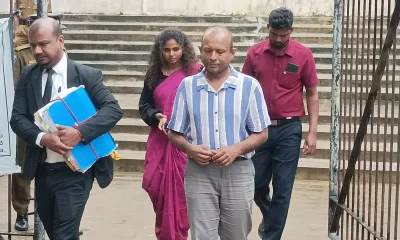
 News5 days ago
News5 days agoGota ordered to give court evidence of life threats
-
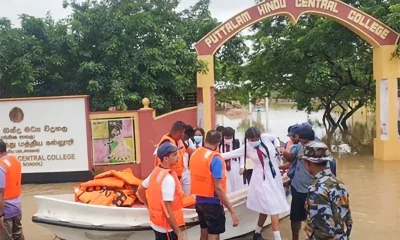
 Features7 days ago
Features7 days agoAn awakening: Revisiting education policy after Cyclone Ditwah
-
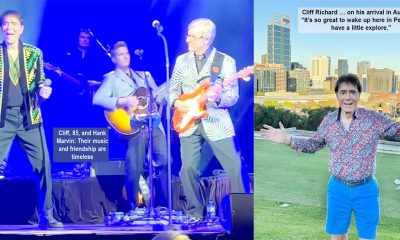
 Features5 days ago
Features5 days agoCliff and Hank recreate golden era of ‘The Young Ones’
-
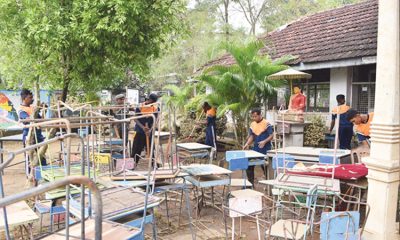
 Opinion6 days ago
Opinion6 days agoA national post-cyclone reflection period?













